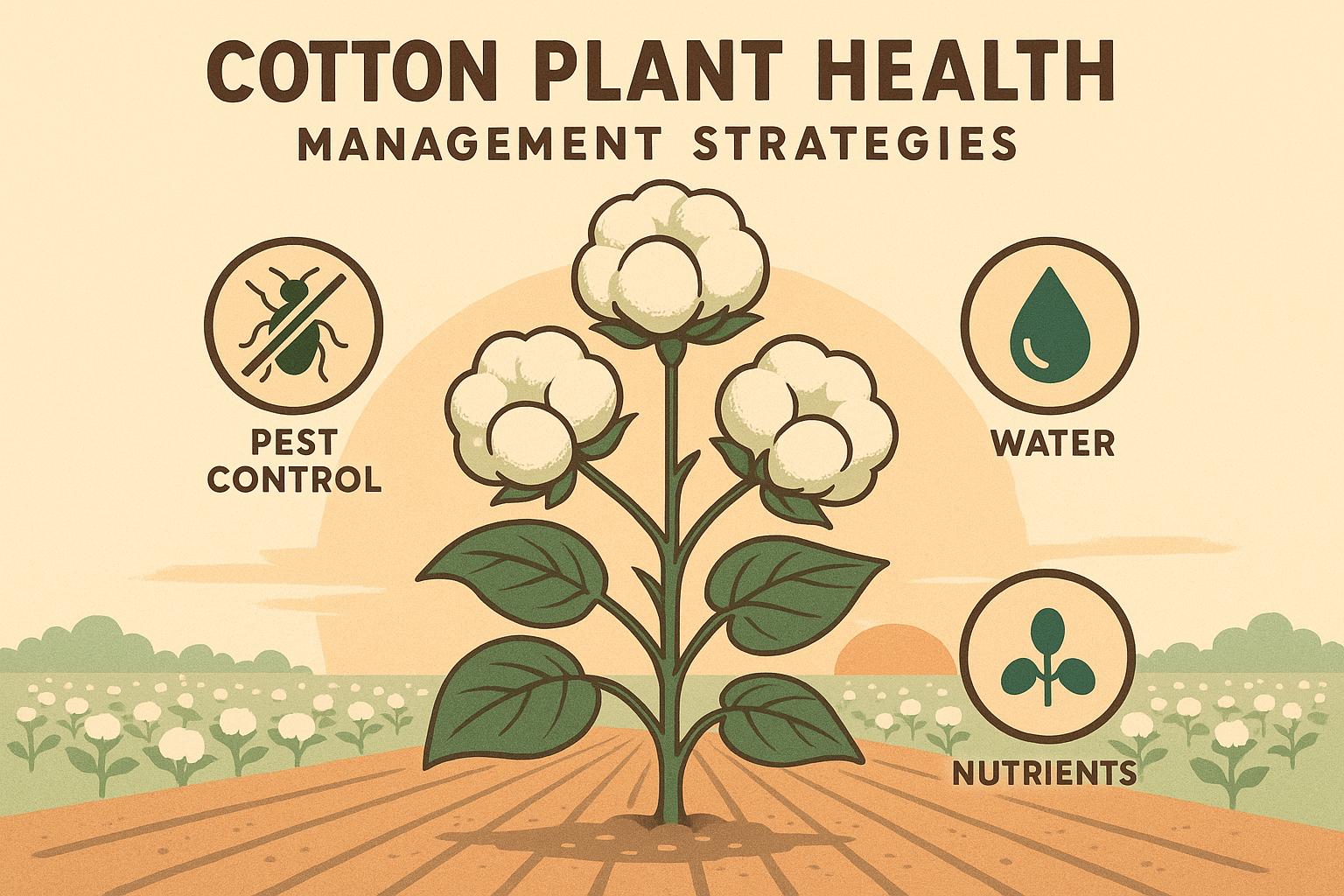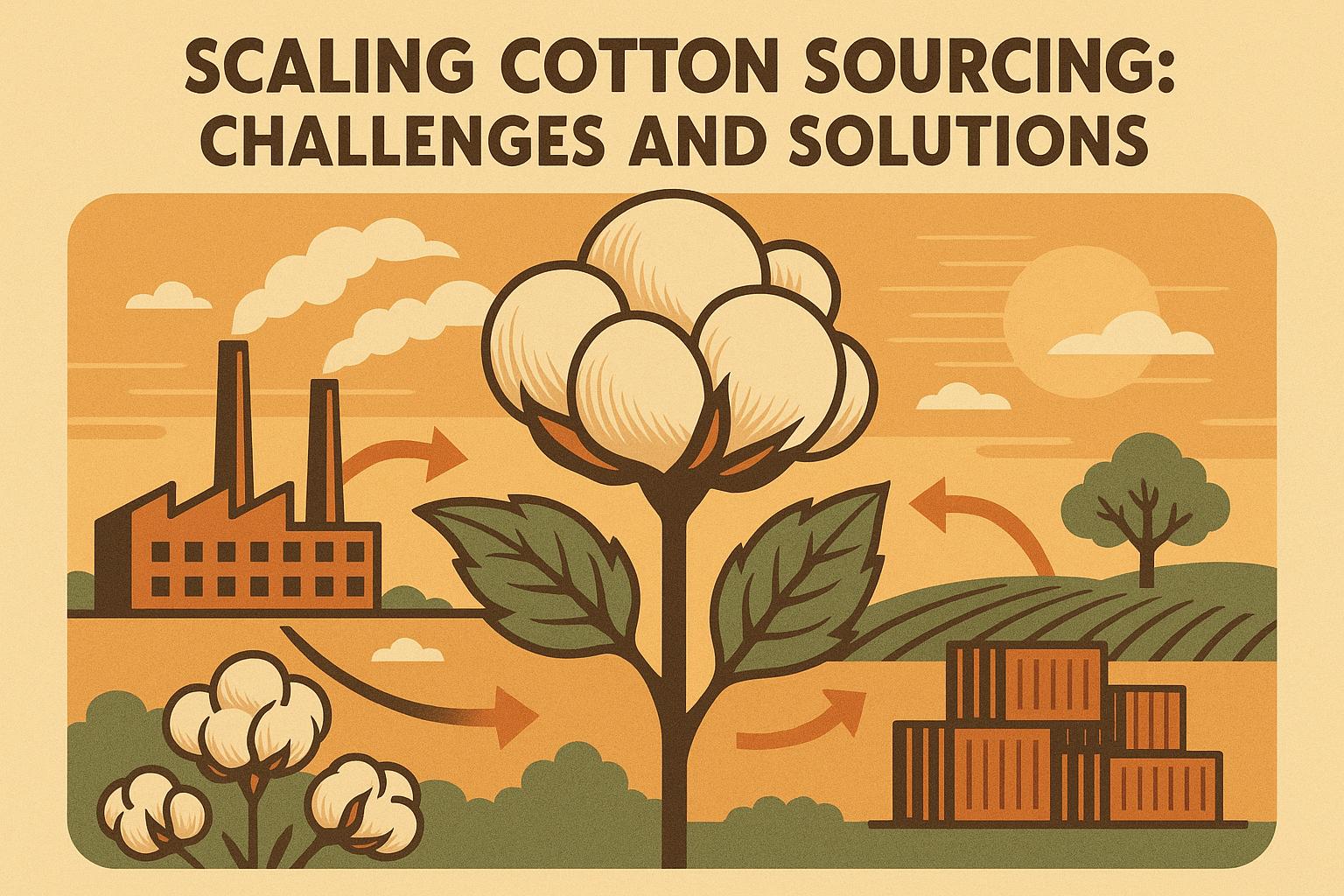Weeds compete fiercely with cotton for water, nutrients, and sunlight, potentially slashing yields by 20-50% if not managed properly. For experienced cotton growers, integrated weed management (IWM) provides a multifaceted approach that combines cultural, mechanical, biological, and chemical tactics to suppress weeds while minimizing resistance risks and environmental impact. Unlike relying solely on herbicides, IWM emphasizes prevention and diversity, helping maintain clean fields throughout the crop's long growing season. This guide outlines essential strategies, from identifying problematic weeds to implementing layered controls, enabling farmers to optimize lint quality and profitability across varied soils and climates. By adopting IWM, you can reduce herbicide inputs by up to 30%, foster soil health, and combat the growing challenge of resistant species like Palmer amaranth.
Common Weeds in Cotton Fields and Their Impacts
Cotton fields host a range of annual and perennial weeds that emerge at different stages, often thriving in the crop's open canopy early on. Broadleaf weeds like Palmer amaranth, waterhemp, and morningglory can grow rapidly, outcompeting seedlings and harboring pests. Grasses such as johnsongrass and barnyardgrass deplete soil moisture, while perennials like nutsedge spread via tubers, making eradication tough. These invaders not only reduce yields but also complicate harvest by contaminating lint with debris.
Resistance exacerbates the issue: Glyphosate-resistant Palmer amaranth, now widespread in cotton belts, survives standard treatments, leading to exponential seed production—one plant can produce over 100,000 seeds. Early identification is key; scout for distinct traits like pigweed's reddish stems or morningglory's heart-shaped leaves.
Here's a table of common cotton weeds, their characteristics, impacts, and critical control periods:
| Weed Type | Examples | Characteristics | Yield Impact | Critical Control Period |
|---|---|---|---|---|
| Broadleaf Annuals | Palmer amaranth, Waterhemp | Fast-growing, tall (up to 6 ft) | Up to 50% loss via competition | Emergence to 4-leaf cotton |
| Broadleaf Vines | Morningglory, Bindweed | Twining stems, rapid spread | Boll shading, harvest tangles | Pre-plant to squaring |
| Grasses | Johnsongrass, Barnyardgrass | Rhizomatous, drought-tolerant | 20-30% moisture depletion | Seedling to canopy closure |
| Sedges | Yellow Nutsedge, Purple Nutsedge | Tuber-based perennials | Persistent, hard to eradicate | Throughout season |
| Perennials | Field Bindweed, Bermudagrass | Deep roots, vegetative spread | Long-term field infestation | Off-season and early growth |
Addressing these early prevents seedbank buildup, with IWM focusing on disrupting life cycles.
Principles of Integrated Weed Management
IWM is rooted in four pillars: prevention, monitoring, suppression, and evaluation. Prevention involves clean equipment, certified seed, and field borders to block weed entry. Monitoring tracks weed density and species via regular scouting. Suppression layers tactics to target vulnerabilities, and evaluation refines approaches based on outcomes. This system reduces reliance on any single method, delaying resistance—critical as herbicide-resistant weeds have surged 57% since 2000.
Economic thresholds guide action: Intervene when weeds reach 1-2 per square foot in early stages to avoid 10-20% yield hits. Adapt to regional challenges—sandy soils favor quick-emerging annuals, while clays harbor perennials.
Scouting and Monitoring for Timely Detection
Vigilant scouting underpins IWM success. Walk fields weekly in a W-pattern, sampling 10-20 sites per acre to assess weed types, sizes, and densities. Use apps or GPS for mapping hotspots, noting environmental triggers like rainfall that spur germination. Focus on edges and low spots where weeds thrive.
Track resistance indicators: Surviving plants post-treatment signal issues; submit samples for testing. Early detection allows targeted responses, preventing 96% of infestations when combined with covers.
Cultural Control Practices
Cultural methods alter the environment to disadvantage weeds. Crop rotation with non-hosts like corn or soybeans breaks cycles, reducing pigweed by 30-50%. Narrow-row planting (15-20 inches) accelerates canopy closure, shading out weeds and cutting light by 70%.
Cover crops like cereal rye suppress emergence by 50-80%, adding organic matter for better soil structure. Terminate covers 2-4 weeks pre-plant to avoid competition. Mulching or residue retention conserves moisture while smothering seedlings. Optimal planting dates avoid peak weed flushes, and vigorous varieties outcompete invaders.
Mechanical and Physical Controls
Mechanical tactics provide non-chemical knockdowns. Pre-plant tillage buries seeds deep, but minimize to preserve soil health. In-row cultivation at 4-6 leaf stage disrupts small weeds without damaging roots; use hooded sprayers for precision.
Flame weeding targets broadleaves with propane torches, effective in organic systems. Hand hoeing suits escapes, while rod weeders in Texas slice underground stems. These reduce seedbanks over time, complementing herbicides.
Biological Control Options
Biological agents harness nature for suppression. Beneficial insects like lady beetles prey on weed seeds, while bioherbicides from fungi target specifics like nutsedge. Encourage biodiversity with habitat strips to boost predators.
Microbial inoculants degrade weed residues, indirectly curbing regrowth. Though emerging, these cut chemical needs by 20% in integrated setups.
Chemical Controls: Targeted and Rotated Applications
Herbicides remain vital but must be rotated to combat resistance. Pre-emergence options like acetochlor or S-metolachlor provide residual control for 4-6 weeks. Post-emergence mixes (e.g., glyphosate with dicamba) target escapes; use multiple modes of action (MOAs) to prevent adaptation.
Apply at optimal conditions: 15 GPA volume, medium droplets, warm/humid weather. Tank-mix residuals for overlap; avoid over-reliance on glyphosate. In resistant areas, quadruple-trait varieties enable 2,4-D or glufosinate.
Integrating Tactics for Comprehensive Control
Layer IWM for synergy: Combine covers with residuals for 96% suppression, then cultivate and spot-spray. Rotate crops and MOAs annually; use drones for precision spotting. In dry conditions, prioritize timing to exploit weed stress.
Adapt to systems: Ultra-narrow rows enhance suppression. Evaluate yearly via yield maps and weed counts.
Benefits of IWM in Cotton Production
IWM boosts yields 15-25%, cuts costs by 20%, and delays resistance. It enhances soil health, reduces runoff, and meets sustainability demands. Long-term, it sustains productivity amid evolving threats.
Overcoming Challenges and Long-Term Tips
Resistance demands vigilance; clean equipment to prevent spread. Budget for diverse tools; collaborate with extensions for updates.
In conclusion, integrated weed management equips cotton farmers to tackle weeds sustainably, ensuring robust harvests. For related insights, explore our state cotton histories on CottonGins.org. What's your top IWM tactic?


